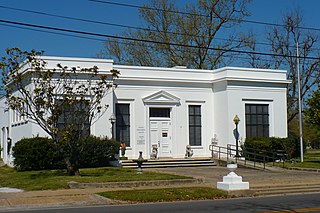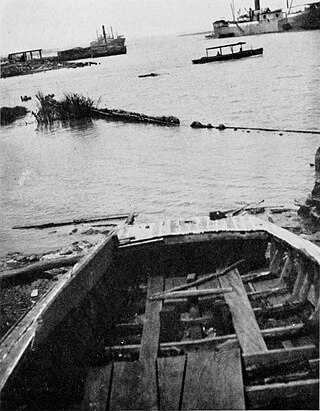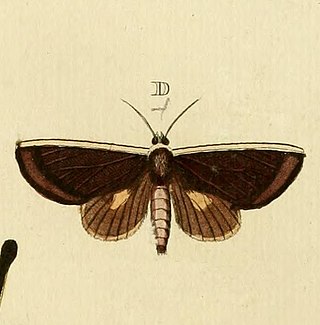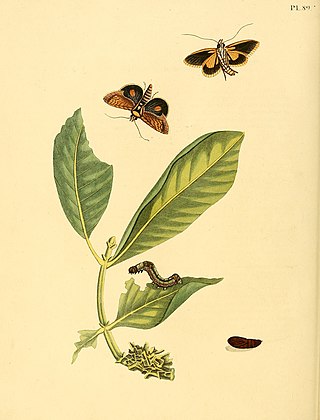
Clotilde, also known as Clothilde, Clotilda, Clotild, Rotilde etc., was a Queen of the Franks. She was supposedly descended from the Gothic king Athanaric and became the second wife of the Frankish king Clovis I in 493. The Merovingian dynasty to which her husband belonged ruled Frankish kingdoms for over 200 years (450–758).

Ouidah or Whydah, and known locally as Glexwe, formerly the chief port of the Kingdom of Whydah, is a city on the coast of the Republic of Benin. The commune covers an area of 364 km2 (141 sq mi) and as of 2002 had a population of 76,555 people.
Basina, was a Frankish princess, the daughter and youngest child of Chilperic I, King of Soissons, and his first wife, Audovera. After surviving the assassination of her immediate family, she became a nun. She later helped to lead a rebellion by a group of the nuns, which became a scandal throughout the region. This event was chronicled by the bishop and saint, Gregory of Tours, who was one of the bishops chosen to settle the matter.

Cudjoe Kazoola Lewis, born Oluale Kossola, and also known as Cudjo Lewis, was the third to last adult survivor of the Atlantic slave trade between Africa and the United States. Together with 115 other African captives, he was brought to the United States on board the ship Clotilda in 1860. The captives were landed in backwaters of the Mobile River near Mobile, Alabama, and hidden from authorities. The ship was scuttled to evade discovery, and remained undiscovered until May 2019.

The National African American Archives and Museum, formerly known as the Davis Avenue Branch of Mobile Public Library, is an archive and history museum located in Mobile, Alabama. It serves as a repository for documents, records, photographs, books, African carvings, furniture, and special collections that relate to the African-American experience in the United States. Some of the collection was developed when the building was part of the Mobile Public Library as the Davis Avenue Branch.

The schooner Clotilda was the last known U.S. slave ship to bring captives from Africa to the United States, arriving at Mobile Bay, in autumn 1859 or on July 9, 1860, with 110 African men, women, and children. The ship was a two-masted schooner, 86 feet (26 m) long with a beam of 23 ft (7.0 m).

Africatown, also known as AfricaTown USA and Plateau, is a historic community located three miles (5 km) north of downtown Mobile, Alabama. It was formed by a group of 32 West Africans, who in 1860 were bought and transported against their will in the last known illegal shipment of slaves to the United States. The Atlantic slave trade had been banned since 1808, but 110 slaves held by the Kingdom of Dahomey were smuggled into Mobile on the Clotilda, which was burned and scuttled to try to conceal its illicit cargo. More than 30 of these people, believed to be ethnic Yoruba, Ewe, and Fon, founded and created their own community in what became Africatown. They retained their West African customs and language into the 1950s, while their children and some elders also learned English. Cudjo Kazoola Lewis, a founder of Africatown, lived until 1935 and was long thought to be the last survivor of the slaves from the Clotilda living in Africatown.

Gonodonta is a genus of moths in the family Erebidae. The genus was erected by Jacob Hübner in 1818.

Gonodonta sinaldus, the moonseed fruitpiecer, is a moth of the family Erebidae. The species was first described by Achille Guenée in 1852. It is found from the Mexican border north to Concan in the Texas Hill Country. There are sporadic records north to at least Dallas, south at least to Trinidad and Colombia.

Gonodonta sicheas is a moth of the family Erebidae first described by Pieter Cramer in 1777. It is found in Mexico, Guatemala, from Panama to Colombia, Venezuela, Ecuador, Peru, Brazil and on the Antilles. It is also found in the southern United States, including Florida and Texas.
El amor no es como lo pintan is a Mexican telenovela produced by Juan David Burns and Elisa Salinas for TV Azteca. It was broadcast on Azteca Trece from September 4, 2000 to May 4, 2001 for 175 episodes and the first Mexican version of the popular Colombian telenovela, Yo soy Betty, la fea.

Tropical Storm Clotilda was a destructive tropical cyclone that inundated Réunion in February 1987. A tropical disturbance first formed between Madagascar and Réunion on February 9 and slowly intensified thereafter. While meandering, the storm fluctuated in intensity before it reached its peak intensity on February 13, with winds of 110 km/h (70 mph). After passing near Réunion, it began to weaken. On February 16, however, Clotilda began to regain strength, and reached its secondary peak on February 17. Two days later, Clotilda became an extratropical cyclone. By February 22, Clotilda was no long being tracked by meteorologists. While active, it brought torrential rains to the island of Réunion during a span of 72 hours. A total of 1,855 mm (73.0 in) of rain was recorded in La Plaine-des-Palmistes; rainfall totals occasionally exceeded the totals measured during Cyclone Hyacinthe, the last major storm to affect Réunion. However, the peak total measured in Hyacinthe was lower than the total measured during Clotilda. Furthermore, about 250 homes were damaged and roughly 120 homes were destroyed. Eighty-nine trees were also brought down during the storm. Throughout the island, damage totaled $2 million (1987 USD) and 10 people were killed. In addition to the destruction on Réunion, 5% of crops on Mauritius were impacted by the storm. During the aftermath of the cyclone, 1,000 people on Réunion were evacuated to shelters.
Gonodonta nitidimacula is a species of fruit-piercing moth in the family Erebidae. It is found in North America.
Gonodonta bidens is a species of fruit-piercing moth in the family Erebidae. It is found in North America.

Gonodonta pyrgo is a species of fruit-piercing moth in the family Erebidae first described by Pieter Cramer in 1777. It is found in North America.
Gonodonta unica, the unica citrus moth, is a species of fruit-piercing moth in the family Erebidae. It is found in North America.

Gonodonta incurva is a species of fruit-piercing moth in the family Erebidae. It is found in North America.
Timothy Meaher was an American slave trader. He was raised in rural Whitefield, Maine. In his 20s, he moved to Mobile, Alabama where he became a wealthy human trafficker, businessman and landowner. He built and owned the slave-ship Clotilda and was responsible for illegally smuggling the last enslaved Africans into the United States in 1860.
Clotilda Adessa Douglas-Yakimchuk was a Canadian nurse. She was the first African-Canadian to graduate from the Nova Scotia Hospital School of Nursing and the first black president of the Registered Nurses’ Association of Nova Scotia.
Matilda McCrear was the last known living survivor in the United States of the transatlantic slave trade and the ship Clotilda. She was a Yoruba who was captured and brought to Mobile, Mobile County, Alabama at the age of two with her mother and older sister.











